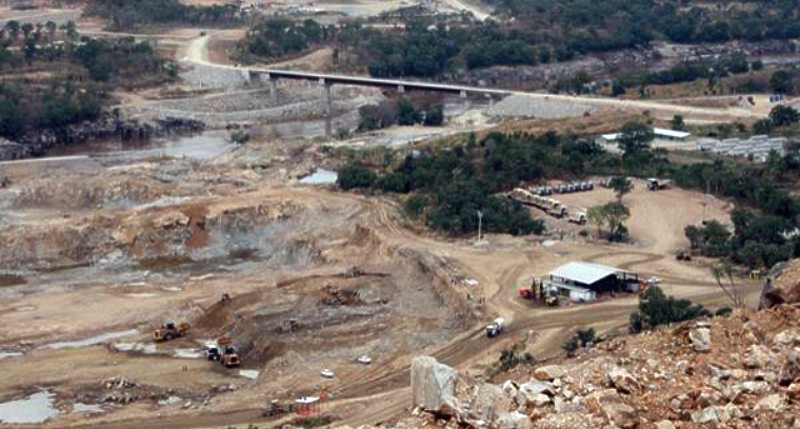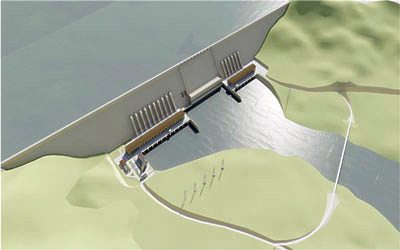 | This article was found at the online version of afrol News. The URL and reference to the article is http://www.afrol.com/articles/38393 |
SQL/DB Error -- [Unknown table engine 'InnoDB']
 Ethiopia
EthiopiaEconomy - Development | Society
Ethiopia plans Africa's biggest dam
 |
Projected: The Grand Ethiopian Renaissance Dam
|
| © EEPCo/afrol News |
But Ethiopia must first resolve matters with Egypt, which, along with Sudan, claims the rights to the river following a 1929 agreement. That agreement excluded other countries along the Nile River trajectory, such as Ethiopia, Kenya, Rwanda, Tanzania and Uganda. Egypt fears that the dam will suck up water flows to the country and severely affect its domestic consumption.
About 86% of the Nile River's water actually originates from Ethiopia, a point the country is underscoring to press its case. In addition, it says that independent experts believe the dam will not affect water flows to Egypt. "There should not be any concerns about a diminished water flow," Alemayehu Tegenu, Ethiopia's minister of water and energy, told international media.
Such assurances have not calmed Egypt's fears. In early June, then-president Mohammed Morsi directed his foreign and irrigation ministers to get more information from Ethiopia on the dam's impact on water supply to Egypt. Although President Morsi took a cautious approach, some Egyptian politicians were demanding a stronger response.
Many observers, however, believe that the countries will find a compromise point that will allow Ethiopia to complete the project by July 2017 and also ensure that there is no impact on water flows to Egypt's population.
Egypt also recently launched a water transportation route that will connect it with nine other East African countries: Democratic Republic of the Congo, Burundi, Ethiopia, Kenya, Rwanda, South Sudan, Sudan, Tanzania and Uganda.
Managing trans-boundary water resources is not always a complicated matter.
Since 1994, for example, Angola, Botswana, and Namibia have successfully managed water supplies from the 1,100-km Okavango River that runs through all three countries. They signed an agreement to coordinate water sharing and sustainable use, and even set up the Permanent Okavango River Basin Water Commission to monitor the agreement.
Water is a huge issue in Africa. Up to 300 million Africans still don't have access to safe drinking water, according to the World Bank. The UN in 2010 declared access to clean water a fundamental human right. Drought in the horn of Africa has caused thousands of deaths, killing 260,000 people in Somalia alone from 2010 to 2012, according to the US-funded Famine Early Warning Systems Network, which provides information on food insecurity.
African countries are making mixed progress towards the Millennium Development Goal drinking water global target, which is to halve by 2015 the number of people without access to clean water.
While North Africa has attained up to 92 percent water coverage, sub-Saharan Africa has only managed 63 percent, states the 2013 Millennium Development Goals report. The report adds that in sub-Saharan Africa improvements have mainly been in the urban areas, while in the rural areas about 40 percent of households still don't have access to safe water.
With 2013 declared by the UN as the International Year of Water Cooperation, African governments, development agencies, citizens and others will have to formulate and implement policies to ensure efficient water management.
This article was found at the online version of afrol News: www.afrol.com
|

No hay comentarios:
Publicar un comentario